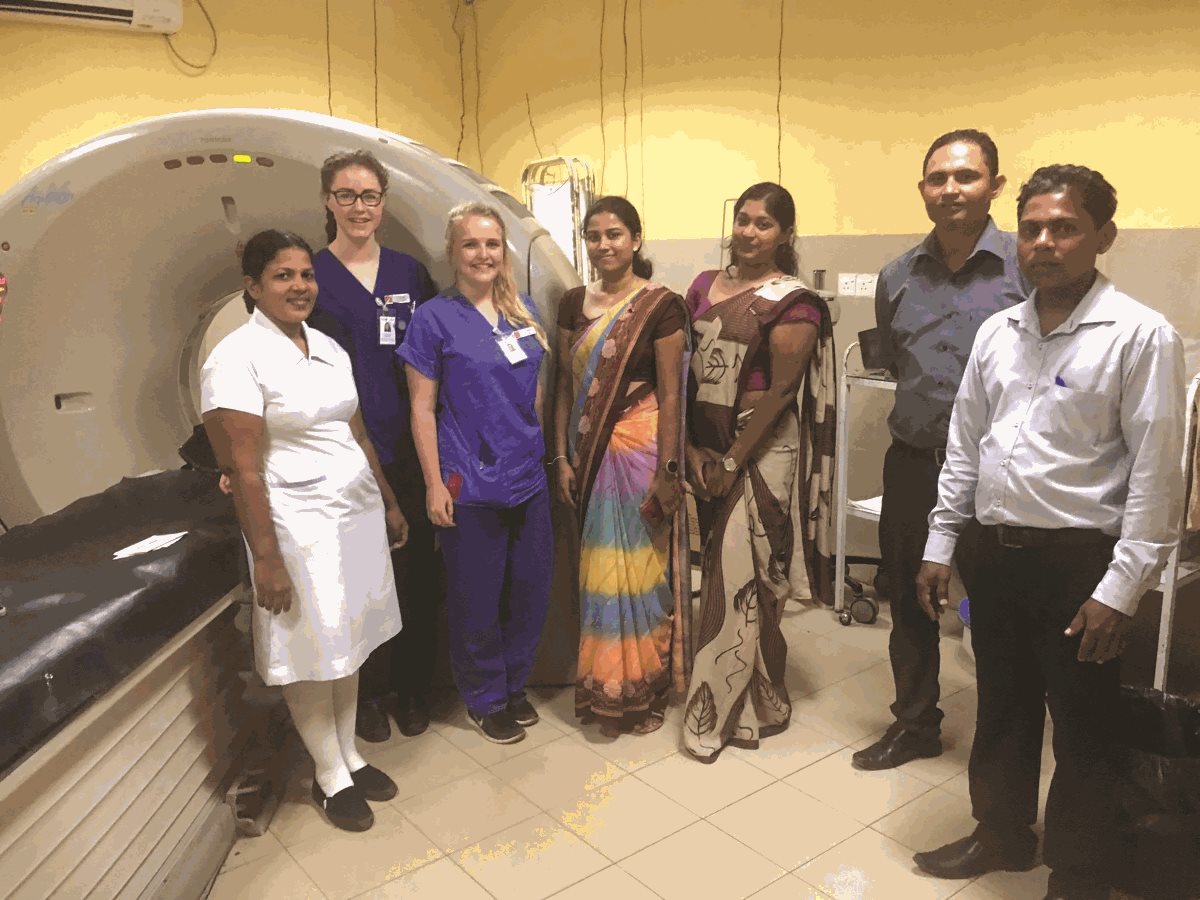Cardiff University students Erin Gillespie and Hannah Satherley report back from their recent elective placement with Work the World at a teaching hospital in Sri Lanka.
Radiography in the UK is very different to everywhere else in the world, and certainly in the developing world, but what else do we know?
As two diagnostic radiography students from Cardiff University, we decided to further our understanding of worldwide healthcare by arranging an elective placement in Anuradhapura Teaching Hospital in Sri Lanka.
First observations
In the first week, we worked in general x-ray where two rooms were used to see around 350 patients each day. Whilst one patient is x-rayed, three or four patients are waiting in the same room, perhaps getting changed in the cubicle.
Family members are used to help position immobile patients and stay in the room during the exposure. Dosimetry is non-existent in Sri Lanka and therefore there is no way for radiographers to check that they are keeping to ALARA principles.
The majority of x-rays were done using plain film which we had absolutely no idea how to use! However, they did have a CR cassette and cassette reader which we were much more familiar with.
While the radiographers taught us how to use plain film and their equipment – which was far older than anything we had used before – we also got the opportunity to help them learn to use the CR equipment which they felt less confident with.
One of the things we struggled with most was sticking makeshift lead numbers onto a plaster for each patient (especially trying to make a number four with a seven and a one). We are so thankful for the computer systems we have now to help with patient identification.
During our second week, we were placed in CT where they operate a third-generation Toshiba CT scanner which was donated by the Japanese government, and the air conditioning that the machine required was very welcomed. In an average morning, around 33 patients were scanned.
The pace was fast but it was amazing to be involved, even if our spelling of patient names was not the best! The equipment in the department worked well but the training to use this equipment was lacking. For example, we saw a fractured humerus on a 14-year-old being scanned on an adult abdomen protocol. This happened quite frequently as the software proves hard to use, and is not available in Sinhalese.
Lightning speed
The elective made us aware that in UK departments it’s not just the images that matter, but the opportunity to speak to patients and comfort them through a worrying time. We missed this caring element and the language barrier made communication and the ability to comfort patients very difficult.
It was quicker for the radiographers to position the patients themselves, rather than using gentle instructions. It wasn’t easy to watch how fast they went through their patients, but the whole department worked tirelessly for them, putting them first by getting the images required.
Even after six months, it would have been impossible for us to operate as efficiently as the ten radiographers we worked with, even if our Sinhalese advanced beyond ‘oyage nama’ and ‘wayassa keeyada’ (what is your name and date of birth?) – key skills for radiographers anywhere in the world!
Barely any x-rays we saw required a repeat as the radiographers were so skilled in acquiring images quickly and under pressure, especially when the lights cut out during exposure!
Out and about
The radiographers wanted to learn all about radiography in the UK, our equipment, our families and scenery. We loved exchanging knowledge and talking about the differences in practice.
In our free time we got to explore the island with the programme co-ordinators, Mewan and Shashini, who gave us tips on where to go and what to see. We were so grateful to have this experience which included climbing Sigiriya rock and seeing the Poson Full Moon Poya Festival which celebrates the arrival of Buddhism in Sri Lanka.
We also got the chance to try lots of traditional Sri Lankan cuisine, both in the Work the World house and from the staff working in the hospital, who brought in homemade treats. On our last day in the hospital, the radiographers invited us out for a meal and brought their families along to meet us, which was a lovely goodbye and definitely an experience we will never forget.
Our time in Sri Lanka was the best way to learn a little more about worldwide radiography. We will forever value the experiences we had and the people we met there, and will never forget the lengths the staff go to to get the images their patients require.
https://radiblography2016.wordpress.com/
